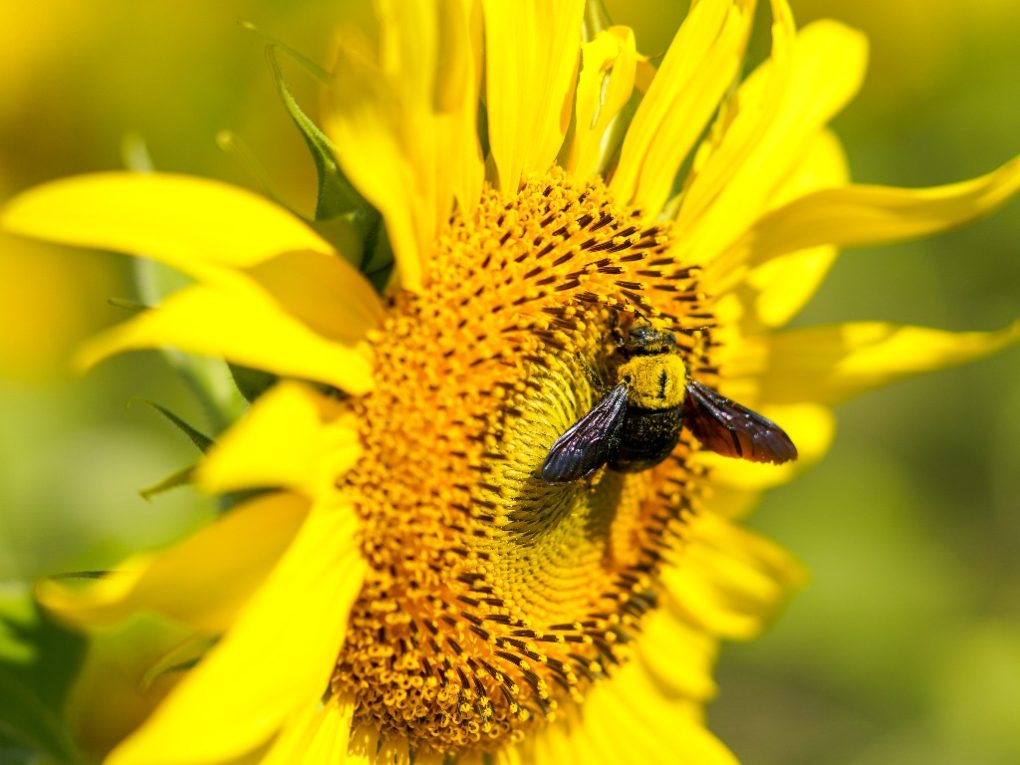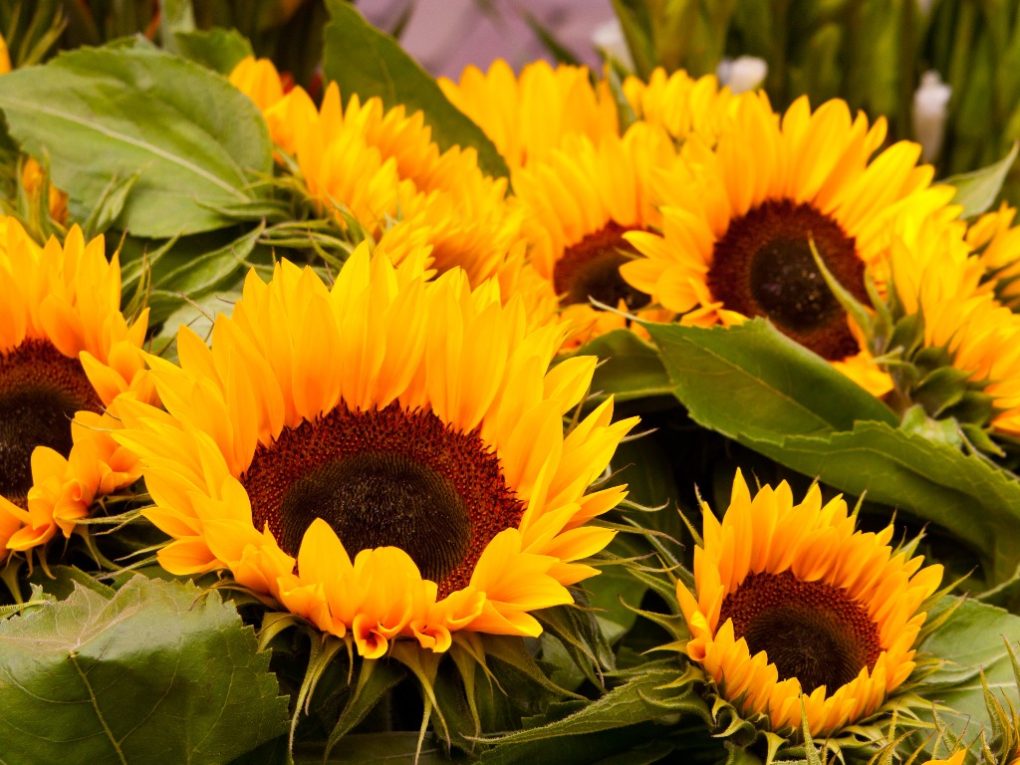Do Sunflowers Attract Bees: How to Attract More Bees to Your Sunflower
Yes, sunflowers attract bees. The bright yellow color of sunflowers and their large central disk containing many small flowers produce pollen and nectar attractive to bees. Bees are attracted to nectar because it is a rich source of carbohydrates, which they need for energy, while they need pollen because it is an important protein source.

Sunflowers rely on pollinators like bees to transfer pollen from the male parts of their flowers to the female parts, which is necessary for the plant to produce seeds. Without pollination, the sunflower plants could not reproduce and produce seeds. Bees also help increase the genetic diversity of sunflower populations by carrying pollen from different plants, which can improve the overall health and vigor of the population.
Table of Contents
How to Attract More Bees to Your Sunflower Garden
Plant Them in Spring
By planting sunflowers in the spring and summer, you can provide bees with a reliable source of nectar and pollen during the growing season when many other flowers may not bloom. Sunflowers are annual plants that grow quickly and produce large flowers that attract bees.
Sunflowers can be planted in the spring after the last frost date in your area, and they will typically bloom in the summer months. You can also plant a second crop of sunflowers in mid-summer for a second bloom in the fall. This can provide bees with food later in the season when other flowers may have finished blooming.
Provide a Source of Water
Bees need water to drink, and they will often seek out water sources near their foraging areas. A water source in your garden or yard can make your property more attractive to bees and other pollinators.
There are several ways to provide water for bees. One simple way is to place a shallow dish or tray filled with water in your garden or yard. You can also place rocks or twigs in the water to provide landing spots for the bees. Be sure to change the water frequently to prevent it from becoming stagnant and attracting mosquitoes.
Another option is to create a small pond or water feature in your garden. This can provide a more permanent water source for bees and other pollinators. A small pond or water feature can also create a more diverse and attractive habitat for bees, encouraging them to visit your sunflowers and other plants more frequently.
Plant Them in Masses
Planting sunflowers in masses can attract bees in several ways:
- More flowers: By planting sunflowers in large groups, you provide more flowers for bees to visit. This increases the chances that bees will find the sunflowers and spend more time foraging in the area.
- Better visibility: Planting sunflowers in masses also increases their visibility to bees. A large group of sunflowers with bright yellow petals can be easily seen by bees flying overhead or from a distance.
- Attractiveness: Bees are attracted to flowers with high concentrations of nectar and pollen. Planting sunflowers in masses increases the concentration of flowers in a given area, making it more attractive to bees.
- Efficient use of time: Bees are efficient foragers who prefer visiting multiple flowers in a given area rather than flying long distances between isolated flowers. Planting sunflowers in masses reduces the time, and energy bees need to spend traveling between flowers, making it easier for them to collect nectar and pollen.

Use Organic Pesticides
Using organic pesticides for sunflowers can attract more bees because it reduces the number of harmful chemicals that can harm or kill bees. Organic pesticides are typically made from natural ingredients and are designed to target specific pests while minimizing harm to beneficial insects like bees.
When harmful pesticides are used on sunflowers, they can harm the bee population. For example, bees can come into contact with these pesticides while foraging on the sunflowers or drinking nectar, leading to illness or death. This can also impact the health of the overall bee population in the area.
Using organic pesticides can help protect the health of bees and other pollinators while controlling pests that can damage your sunflowers. This can create a safer and more bee-friendly environment in your garden or yard, which can help to attract more bees.
Additionally, using organic methods to control pests can help to promote a more balanced ecosystem in your garden or yard. This can create a more diverse and attractive habitat for bees and other pollinators, encouraging them to visit your sunflowers more frequently.
Choose a Sunny Location
Sunflowers are sun-loving plants and require full sun exposure for optimal growth and development. By planting sunflowers in a sunny location, you create an environment more conducive to the growth and production of the flowers.
Bees are also attracted to sunny locations because they need warmth and sunlight to regulate their body temperature. Bees are cold-blooded insects, relying on the sun’s heat to keep their bodies active. By choosing a sunny location for your sunflowers, you create a warm and inviting environment for bees to forage and collect nectar and pollen.
In addition, a sunny location can also help to improve the overall health and productivity of your sunflowers. Sunflowers need plenty of sunlight to grow and produce large, healthy flowers. By providing your sunflowers with a sunny location, you can help ensure they receive the necessary amount of sunlight to thrive and produce plenty of flowers for bees and other pollinators to visit.

Plant a Variety of Sunflower Species
Bees are attracted to a diverse range of flowers, including different species of sunflowers. By planting various sunflower species, you can create a more diverse and attractive habitat for bees, encouraging them to visit your garden or yard more frequently.
Different species of sunflowers have different characteristics that can appeal to bees. For example, some species may produce larger or more abundant flowers, while others may produce more nectar or pollen. By planting various sunflower species, you can provide bees with a range of options, increasing the chances that they will find a flower that meets their needs.
In addition, planting various sunflower species can help extend the blooming season and provide a more consistent source of nectar and pollen for bees throughout the growing season. This can help to ensure that bees have a reliable source of food and can help to support the health and productivity of the bee population in your area.
